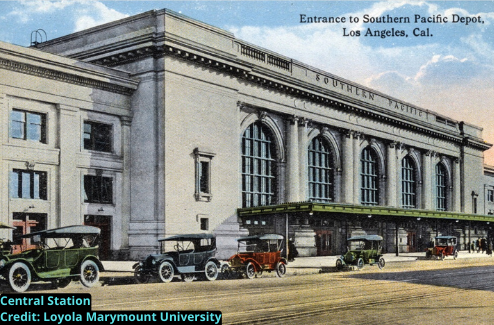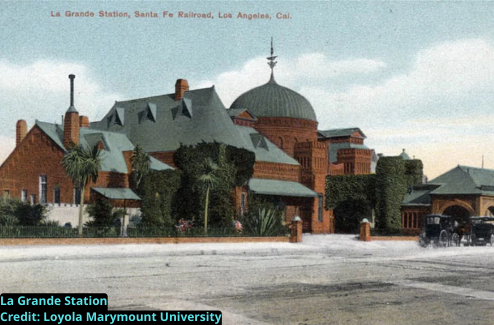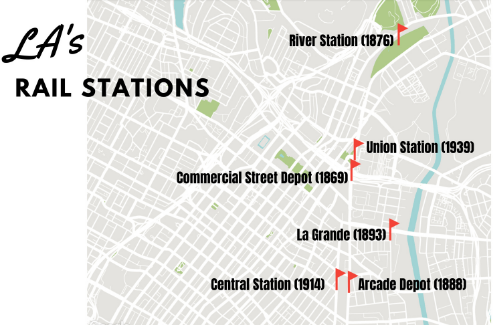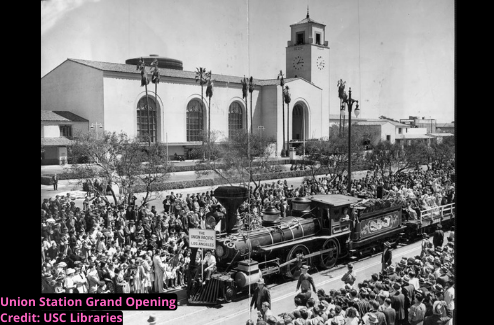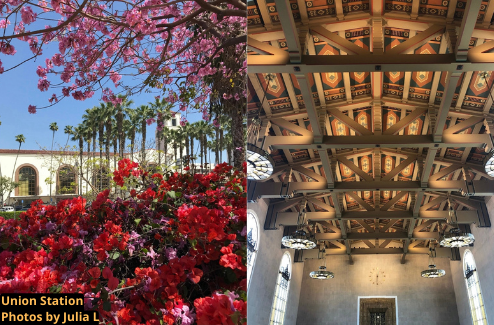
Welcome to a story about Los Angeles’ Union Station, known as America’s “Last of the Great Rail Stations!” Have you visited this iconic building? If not, or if it’s been a while, hopefully this story will inspire you to visit soon.
So, how did Union Station come to be? First, let’s examine the stations that preceded it. The first railroad to come to Southern California was the Los Angeles and San Pedro Railroad in 1869. Although this was primarily used to transport freight from the San Pedro ports into the city, it assisted in Los Angeles’ rapid growth from that point on. Not too much later, transcontinental passenger rail started entering the city with Southern Pacific Railroad in 1876, Santa Fe Railroad in 1887, and the Salt Lake Railroad (later called Union Pacific) in 1905. Each of these connected LA to various other parts of the country. In 1900 LA’s population passed 100,000, and by the 1920’s it was approaching one million – Los Angeles was booming!
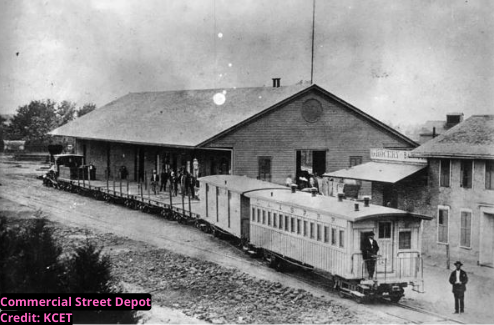
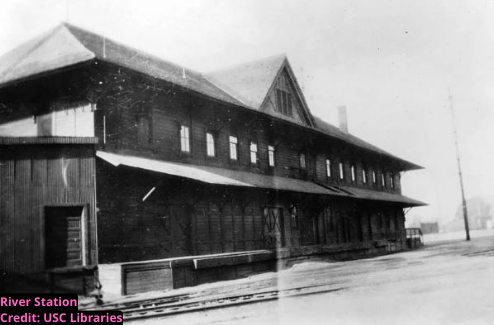
By 1876 it was replaced by River Station, where today’s LA State Historic Park in Chinatown is located. The Southern Pacific Railroad operated from this station and was the first to connect LA to the United States via trains coming in from San Francisco. (to the left, River Station)
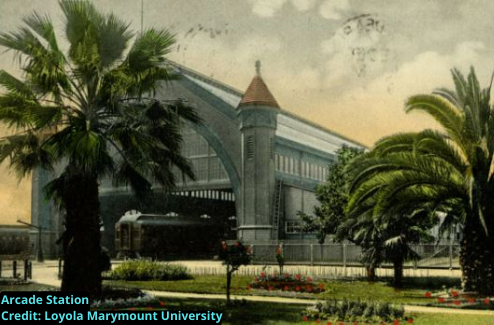
By 1888, River Station was replaced by the Arcade Station, which was located off Alameda Street between 5th and 6th Streets, and which became the new home for Southern Pacific. A fun fact about this station is that the oldest fan palm tree in Los Angeles was transplanted there from its original wild home in 1899! Situated in front of the train station, it greeted visitors and new settlers and confirmed expectations of Los Angeles as a magical land of sunshine. (to the right, Arcade Station)
